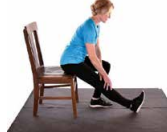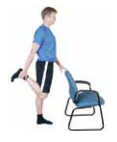
As the days get longer and temperatures rise, the arrival of spring brings with it a sense of renewal. However, the change of season can also have a significant impact on our bodies. After months of winter, when cold weather often leads to less movement and more time indoors, many of us can experience stiffness, sluggishness, and even discomfort as we transition into warmer months. This seasonal shift can affect everything from our joints to our muscles, making us feel less flexible and more prone to injury.
Why Does the Change of Season Affect Our Bodies?

We tend to be less active in winter due to cold temperatures, shorter days, or simply staying cozy indoors. As a result, our bodies may become less accustomed to movement, and muscles may tighten, joints may stiffen, and flexibility can decline. When spring arrives, our bodies may find it challenging to adjust quickly to more active routines or outdoor activities. That’s where physiotherapy can play a key role in helping ease these seasonal aches and get us moving again safely and effectively.
HOW PHYSIOTHERAPY CAN HELP
Physiotherapists are experts at identifying areas of discomfort and stiffness, and they can develop tailored treatment plans to help restore mobility and relieve pain. Whether you’re dealing with tight muscles, achy joints, or a general sense of sluggishness, physiotherapy can address these issues by:
• Customized Exercises: Based on assessment and your specific needs, physiotherapists can recommend specific stretches and exercises that target areas of weakness or tightness, promoting flexibility, strength, and proper alignment.
• Manual Therapy: Techniques such as massage, joint mobilizations, or soft tissue therapy can be used to ease tight muscles and improve circulation, helping to restore mobility.
• Preventative Care: A physiotherapist can help you understand proper posture, movement patterns, and ergonomics, reducing the risk of injury as you reintroduce more activity into your routine.
TIPS FOR GETTING BACK INTO MOTION SAFELY
After months of inactivity, it’s important to ease back into movement with care to prevent overuse injuries. Here are a few physiotherapist-approved tips for shaking off that winter stiffness and springing into action:
1. Start with Gentle Stretching
Stretching is essential to improve flexibility and range of motion. Focus on major muscle groups such as the hamstrings, quadriceps, hip flexors, and back. Start with slow, controlled stretches, holding each position for 20-30 seconds without bouncing.
Spring Stretch Routine:
• Seated Cat-Cow Stretch: Great for loosening the spine and back muscles.

• Seated Hamstring Stretch: Helps lengthen tight muscles on the back of the legs.

• Standing Quad Stretch: Opens up the hips and relieves tension in the front of the thighs.

2. Incorporate Low-Impact Exercises
To build strength and endurance, start with low-impact exercises that won’t strain your muscles or joints. Gradually work on improving cardiovascular fitness and overall strength without putting too much pressure on your body. Spring Activity Suggestions:
• Walking: Begin with short walks and gradually increase the distance and intensity as your body adapts.
• Cycling: Ideal for joint mobility and strengthening the legs without causing excess impact.
• Yoga or Pilates: Both focus on flexibility, core strength, and controlled movements that help ease stiffness — YouTube is a great resource!
3. Stay Consistent with Movement
The key to a smooth transition from winter stiffness to spring flexibility is consistency. Set aside time each day to move, whether it’s a stretching routine, a brisk walk, or an easy bike ride. Gradually build up intensity over time. As we transition from winter to spring, it’s normal to feel a little out of shape or stiff, but with the right approach, you can shake off those seasonal aches and start enjoying the benefits of increased movement.
Physiotherapy is an excellent resource for easing stiffness and building strength. So, take it slow, listen to your body, and let spring be the season where you get back to feeling your best!
If you have questions about where to start, give Megan at Donald Physiotherapy a call (306-933-3372).
– Megan Lautner

Leave a Reply